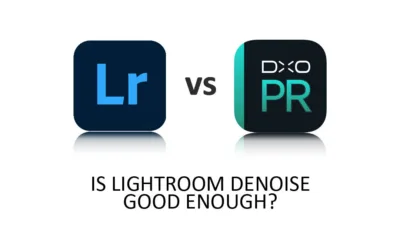Unless you’ve been holidaying on Mars, you’ll know Apple launched its new iPhone 15. But, according to Tony and Chelsea Northrup, Apple’s marketing leaves a lot to desire. Here goes.
#1. 7 Lenses
Apple claims the iPhone 15 Pro is like having seven lenses. Of course, it is plain to see that it only has four, with three on the back and one on the front. So, what gives?
Apple is marketing the ancient art of cropping as a recent hardware innovation. For those unaware of the jargon, cropping is simply trimming a larger photo to a smaller size for an improved composition. In effect, you end up simulating a ‘zoomed’ image, albeit at the cost of discarding a portion of your photo.

But why seven lenses? I’m unsure, as they could have said a fifty, hundred, or one for every millimeter of crop. But I have read that the number 7 provokes more interest than most.
So, do you want seven lenses? Fortunately, you can crop any image to any degree with your existing iPhone and any of the best photo editing software applications.
#2. Telephoto downgrade
The iPhone 15 Pro Max now features a 120mm telephoto lens – ideal for photographing distant subjects. Unfortunately, this lens is less useful for many than the perfect-portrait 77mm lens equipped on the previous model.
Therefore, when shooting a little closer, such as 77mm, the iPhone 15 Pro Max will use one of its wide-angle lenses, crop the image to match 77mm, and insert the missing pixels. The result is awful image quality.
However, thanks to the longer 120mm lens, the iPhone 15 Pro Max can be advertised as a 5x zoom. But it cannot zoom through its 5x range without cropping.
HIGHLIGHTED SOFTWARE DEAL – ARTICLE CONTINUES BELOW

TOPAZ PHOTO AI 2
NOW US$199. READ TOPAZ PHOTO AI REVIEW
#3. Oversized File Format
The iPhone 15 Pro Max advertises a quad-pixel 48-megapixel sensor. But you’ll only get 12 effective megapixels of real-world quality.
This is because each unit of four pixels lives under the same Red, Green, or Blue filter. Therefore, each of the four sub-pixels sees the same thing. Thus, you can achieve a quad-pixel image with any photo you’ve ever taken by enlarging it four-fold. Or, even better, enlarge your photo with one of the best AI upscalers.
So why would Apple create 24 and 48-megapixel files when you only get 12-megapixels effective? Well, 48 megapixels sounds more impressive than 12. The increased file sizes mean you’ll need to buy iPhones with more memory and iCloud storage.
Incidentally, quad-pixel sensors are helpful but not for image quality. You can turn each pixel into a superior cross-type autofocus point by dividing a single pixel into four. For instance, OM Solution’s OM-1 uses a 20-megapixel quad-pixel sensor. They could have called it an 80-megapixel sensor – but didn’t.

#4. Mixing Equivalent Focal Lengths with physical apertures.
This is an old one and not at all exclusive to Apple Marketing. However, Apple states the new iPhone 15 Pro Max features a 120mm telephoto lens, which it does not. After all, how do you fit a 120mm lens into a camera just 8.2mm thick?
Instead, you pair a tiny 16mm F2.8 lens with a small sensor to achieve the same angle of view as a 120mm lens on a full-frame camera. So far, so good.
However, Apple mixes its numbers and pitches its 16mm F2.8 lens as a 120mm F2.8 lens, making it sound comparable to a larger, more expensive alternative.
However, an actual 120mm F2.8 lens aperture has a large light-soaked 42.8mm diameter. Whereas the iPhone’s 16mm F2.8 suffers a 5.7mm diameter. In practical terms, the iPhone’s so-called 120mm F2.8 lens passes 56 times less light than an actual 120mm F2.8 Lens, resulting in vastly inferior image quality.
As a result, the iPhone’s 16mm F2.8 lens, scaled into Full Frame terms, is a 120mm F21 lens – not a 56-time brighter 120mm F2.8.
Get Discounts on Photo Editing Software
Subscribe to my weekly newsletter and be notified of deals and discounts on photography software from ON1, Adobe, Luminar, and more. Spam Promise: Just one email a week, and there’s an unsubscribe link on every email.
Conclusion
Apple co-founder Steve Jobs was once asked why once-dominant companies lose their way. He answered that all big companies begin as innovators. As the money rolls in, they shift resources from innovation to sales to maximize their return on previous innovations, which is fair enough.
But, by withdrawing from innovation, they are killing the next golden goose, leaving them no choice but to redress and remarket older products – as Apple did with the Apple 2 for so many years. And it works, but only for a while.
The iPhone 15 feels a little like the Apple 2 – an updated old product with innovative marketing. As an Apple fan, I hope this isn’t the first step in Apple’s journey to becoming the next Xerox, IBM, Compaq, or HP.
Subscribe to my weekly newsletter and receive deals and discounts on photography software and gear. Subscribe Now.







